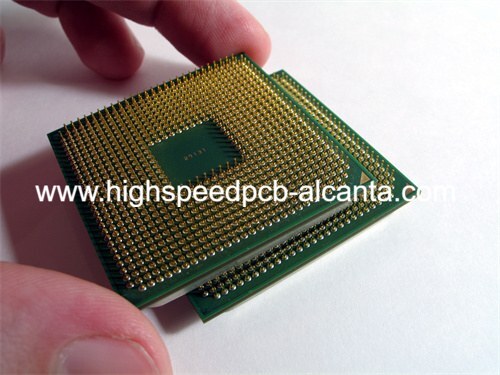Microwave Circuit PCB Manufacturer.As a leading Microwave Circuit PCB manufacturer, we specialize in designing and producing high-performance PCBs for microwave applications. Our advanced manufacturing techniques and state-of-the-art facilities ensure precision, reliability, and superior quality. Catering to industries such as telecommunications, aerospace, and defense, we provide custom solutions that meet the highest standards of microwave circuit design and functionality.
Microwave Circuit PCBs (Printed Circuit Boards) are specialized PCBs designed to operate at microwave frequencies, typically ranging from 300 MHz to 300 GHz. These PCBs are critical in applications requiring high-frequency signal transmission with minimal loss and distortion. This article explores the properties, structure, materials, manufacturing processes, applications, advantages, and frequently asked questions (FAQs) related to Microwave Circuit PCBs.
Structure of Microwave Circuit PCBs
The structure of Microwave Circuit PCBs is designed to support high-frequency signal integrity and performance:
The substrate is typically made from materials with low dielectric constant and loss tangent, such as PTFE (polytetrafluoroethylene), Rogers laminates, or ceramic-filled PTFE composites.
Thin layers of copper are used for conductive traces, ensuring minimal signal loss and high-frequency performance.

Microwave Circuit PCB Manufacturer
High-performance dielectric materials are used to separate conductive layers, maintaining electrical isolation and signal integrity.
Dedicated ground planes are used to provide a reference plane for signals, reducing electromagnetic interference (EMI) and improving signal quality.
Vertical interconnects that connect different layers of the PCB, enabling complex routing and high-density designs.
Protective coatings such as ENIG (Electroless Nickel Immersion Gold) or OSP (Organic Solderability Preservatives) are used to enhance solderability and protect against oxidation.
Materials Used in Microwave Circuit PCBs
Key materials used in Microwave Circuit PCBs include:
A low-loss dielectric material known for its excellent high-frequency performance and stability.
High-performance laminates with low dielectric constant and loss tangent, specifically designed for microwave and RF applications.
These materials offer a balance of low loss, high thermal conductivity, and mechanical stability.
High-purity copper is used for conductive traces due to its excellent electrical conductivity and reliability.
Materials with low dielectric constant and loss tangent, such as Teflon (PTFE) and specialized Rogers materials, are used to ensure minimal signal loss and distortion.
Manufacturing Process of Microwave Circuit PCBs
The manufacturing process for Microwave Circuit PCBs involves several precise steps to ensure high-frequency performance and reliability:
Choosing appropriate base materials and conductive layers based on performance requirements.
Stacking and bonding multiple layers of conductive and dielectric materials under controlled conditions to form a stable PCB.
Precision drilling to create vias and microvias for vertical interconnections between layers.
Electroplating copper onto the substrate and inside vias to establish reliable electrical connections.
Using photolithography and chemical etching to define the circuit patterns and interconnects.
Applying protective coatings to exposed copper surfaces to enhance solderability and protect against oxidation.
Attaching components using soldering techniques suitable for high-frequency applications, ensuring minimal signal loss and distortion.
Rigorous testing for electrical performance, signal integrity, and adherence to design specifications.
Applications of Microwave Circuit PCBs
Microwave Circuit PCBs are used in a wide range of high-frequency applications, including:
Base stations, antennas, and RF modules for mobile and wireless communication networks.
High-frequency radar systems used in defense, aerospace, and automotive applications.
Diagnostic and imaging equipment, such as MRI and ultrasound machines, that require high-frequency signal processing.
Transponders, receivers, and transmitters used in satellite communication systems.
High-frequency sensors and control systems used in manufacturing and process control environments.
Advantages of Microwave Circuit PCBs
Microwave Circuit PCBs offer several significant advantages:
Designed to support microwave frequencies with minimal signal loss and distortion.
Maintains signal quality and integrity through the use of low-loss materials and precise manufacturing processes.
Robust construction and testing ensure long-term performance and reliability in demanding high-frequency applications.
Effective heat dissipation through substrate materials and design features, ensuring stable operation under high-power conditions.
Suitable for a wide range of high-frequency applications across various industries.
FAQ
What materials are typically used for Microwave Circuit PCBs, and why?
Microwave Circuit PCBs commonly use materials like PTFE, Rogers laminates, and ceramic-filled PTFE composites for their low dielectric constant, low loss tangent, and high-frequency stability, which are essential for maintaining signal integrity and performance.
How do Microwave Circuit PCBs differ from standard PCBs?
Microwave Circuit PCBs are designed specifically for high-frequency applications, using specialized materials and manufacturing processes to minimize signal loss and distortion, whereas standard PCBs are typically used for lower-frequency applications and may not require such stringent performance characteristics.
What industries benefit the most from the use of Microwave Circuit PCBs?
Industries such as telecommunications, aerospace and defense, medical devices, satellite communications, and industrial automation benefit significantly from the use of Microwave Circuit PCBs due to their high-frequency performance and reliability.
How are Microwave Circuit PCBs tested to ensure reliability?
Microwave Circuit PCBs undergo rigorous testing processes, including electrical testing for signal integrity and performance, thermal cycling, and reliability testing, to ensure they meet stringent high-frequency performance and durability standards.
